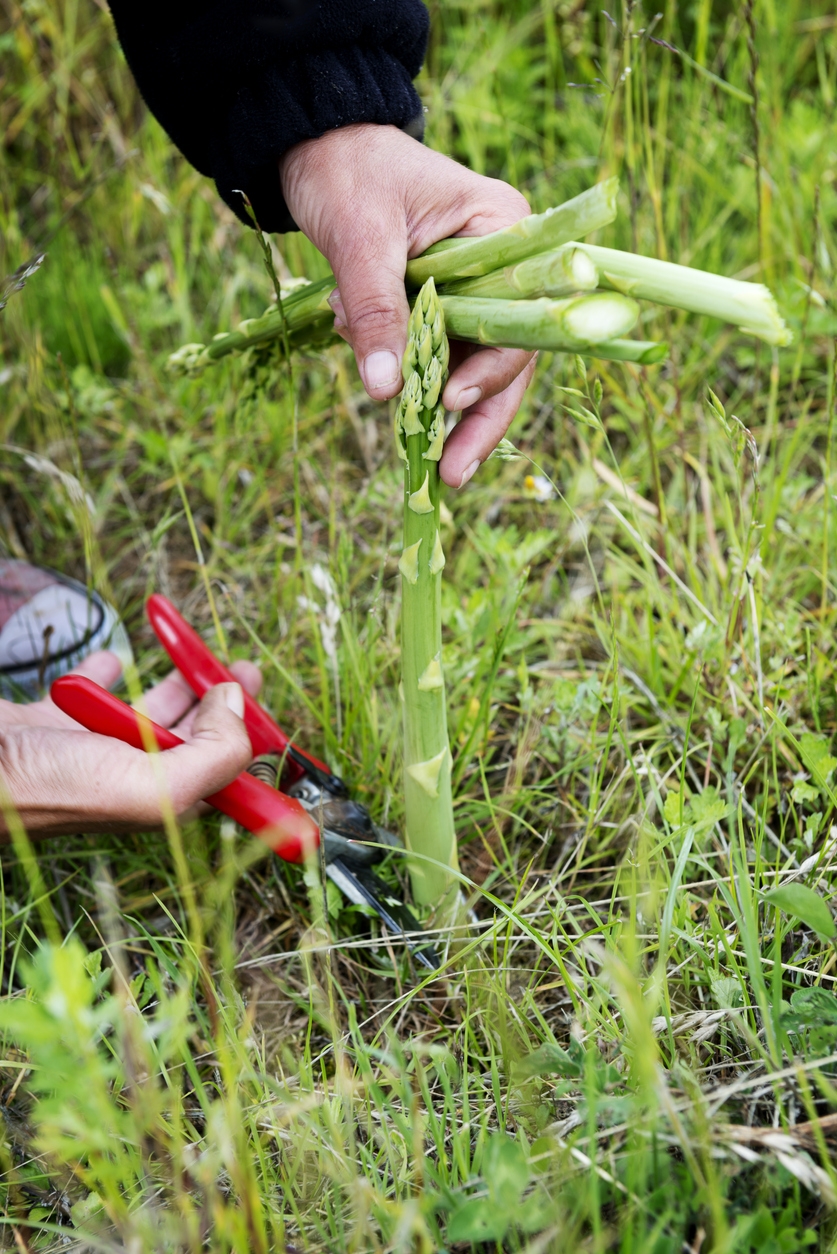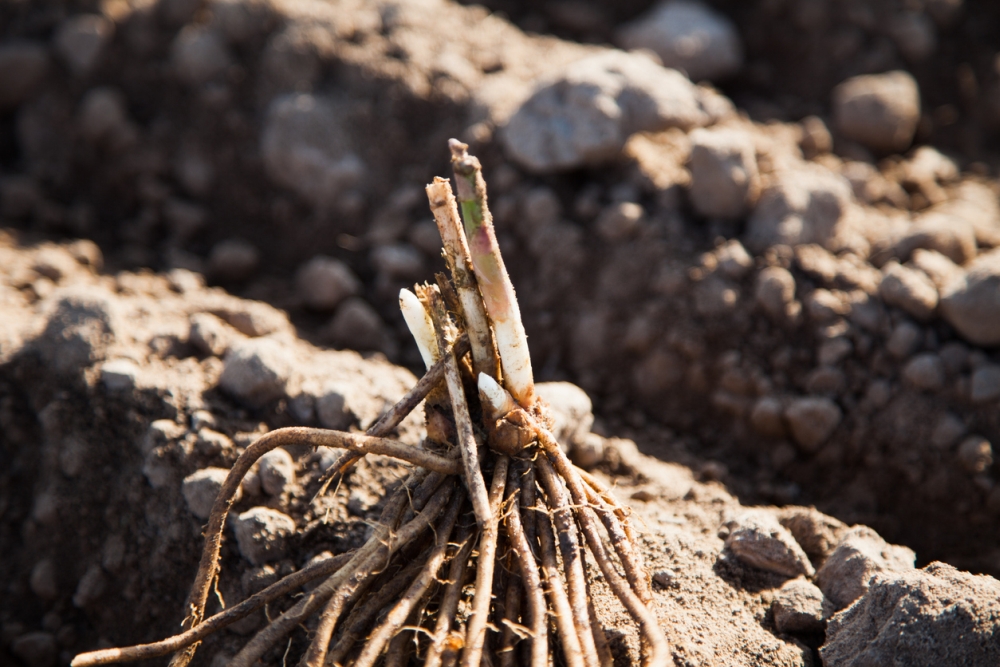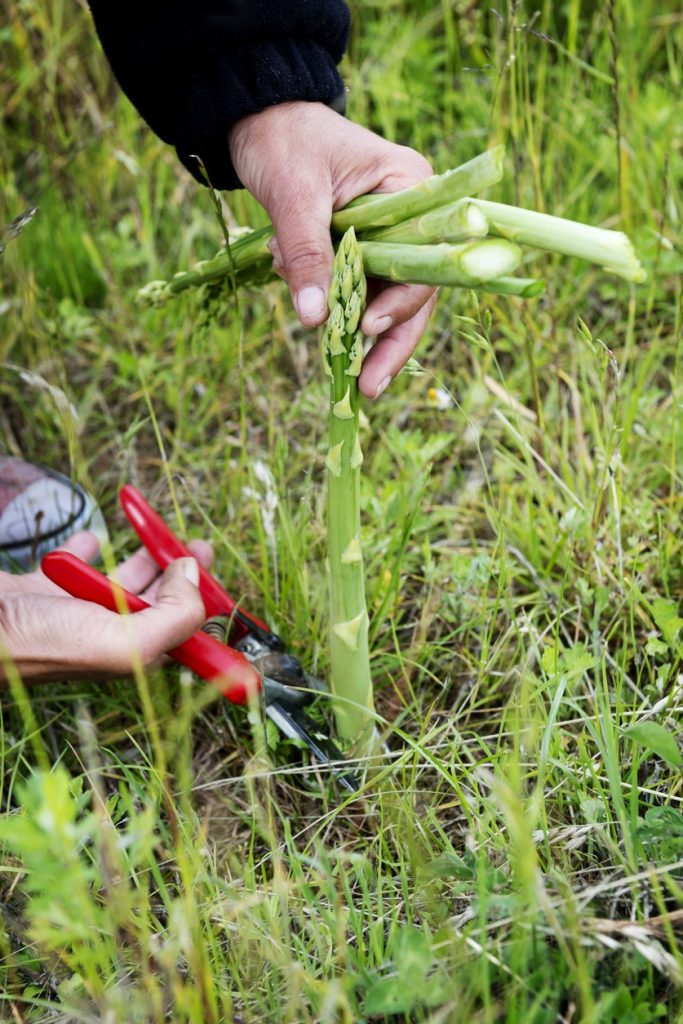Asparagus Growing Problems – How To Fix Asparagus Common Issues
Growing asparagus is more than just an exercise in patience. This veggie rewards you with an early succulent harvest in the early spring while other vegetables haven’t even sprouted yet. But between the time you plant it and harvesting time which might be the best part of two years, you have to match wits with all kinds of diseases and problems.
To be fair, asparagus has some unique growing problems that can be frustrating to deal with especially if you’re new to the perennial veggie. Here are some of those most common asparagus growing problems and how to deal with them.
Asparagus Ferning Out Early
Some veggies tend to bolt when the temperature rises for a few days in a row. Lettuce, garlic, and broccoli shoot a long stalk out of the center of the plant where a flower opens indicating that the plant is focused on seeding now. In asparagus, it’s a little different. The spears of the asparagus start as tender and succulent. They’re ready to harvest for a couple of weeks from the second year onwards. As the plant gets older, that harvesting window increases.
But under some conditions, the spears of the asparagus might turn woody rather quickly and a fern-like blossom emerges at the top.
This could happen due to a hot wave or inadequate watering. If you rely on rainfall to water the plants and the rain season fails you, drought might cause asparagus to fern out early.
How to Fix it
In case of a heat spell in the early spring, there’s little you can do. You might try to grow the veggie in a container to easily move it around and protect it against unpredictable weather conditions. But if it’s growing in the garden and the weather gets warm unexpectedly, the veggie will fern out.
As for drought, you can regulate your watering and step in when the rainfall becomes erratic. Don’t let the soil dry out for long since that triggers ferning out in the asparagus as a defense mechanism.
You can also use mulching to improve the soil’s water retention and minimize the chances of early ferning out.
Asparagus Is Too Thin
Asparagus is known for its longevity. It matches many trees in the number of years it can stay alive. But like many long-lasting plants, it takes time to reach maturity and it tends to peak after a certain age. Many asparagus varieties, for example, are only ready to harvest after three years from planting. In the first couple of years, the asparagus spears are too thin.
The same goes for aging plants. When the asparagus reaches 10 years, it becomes less productive and the spears become too thin. But sometimes an asparagus plant in its prime still produces thin spears. And that can have many causes.
- Wrong Fertilizer: Perennial plants usually need more fertilizer than annuals. In the case of asparagus, it stores its resources in its roots for the next growth in the spring. So feed the plant with a custom 10-10-5 fertilizer with high nitrogen and low phosphorus ratios. Apply the fertilizer once every 2 weeks during the growing season in the spring and summer.
- Age: Once the plant reaches its tenth year, you should divide it to keep it productive. The spears will get thinner by the year as the plant ages.
- Fern Deadheading: Many gardeners assume that the ferns that the asparagus produce are just taking up resources and should be cut down. That’s a mistake because the ferns actually produce a lot of energy that the plant stores in its roots for the next growth come spring. By cutting the ferns, you’re limiting the plant’s stored energy which results in thin spears.
- Wrong Depth: The crown of the plant tends to move around during the growing cycles. Its movement is usually upwards and if the soil is too thin, it might breach the surface. That could disrupt the process of storing resources and impact the health and girth of the new shoots.
How to Fix it
The easiest way to keep your asparagus from producing thin spears is to provide adequate growing conditions. You should use a fertilizer that’s high in nitrogen and low in phosphorus. You can also apply slow-release organic compost to keep the plants fed for extended periods of time.
In the fall, add an extra layer of soil around the crowns to keep them well covered. On average the crowns should be about 5 inches beneath the surface.
Divide any plants older than 10 years old and don’t cut off the ferns since they play an important role in the plant’s photosynthesis process.
Asparagus Winter Care
Like most hard-working plants, asparagus needs time to rest. That’s when it shuts down any growing operations and saves its energies for the spring. In cold zones when the temperature drops drastically in the fall, your plant needs some care.
Some indications the plant is going dormant include leaves turning yellow and falling, and a noticeable lack of any signs of growth. But sometimes, the plant misses the cues from the weather, especially when the fall continues to be mild. This could become a problem when the weather turns quickly and low temperatures damage the crown.
How to Fix it
To encourage the plant to go dormant you need to give it a few nudges. Here are a few steps to help you prepare your asparagus for the winter.
- Start by removing all the brown leaves at the base.
- Wait for a few days then cut off the spear. This should be enough to alert the plant that winter is coming.
- Next, you need to cut off watering altogether. The dry soil pushes the plant into going into a self-preservation mood.
- Cover the soil around the plants with a 6-inch thick layer of mulch. Use organic mulch such as shredded oak bark, straw, pine needles, or wood chips.
Male And Female Asparagus Plants
This issue is related to the thin spears problem we discussed above. Since asparagus plants come in two genders, each sex has its own unique features. Male asparagus often produces thicker and larger spears than females. That’s because female asparagus plants spend more energy in producing seeds while the males conserve their resources to just growing shoots and producing male flowers.
But that doesn’t mean that female asparagus are a waste of space. They tend to produce more spears compared to male plants. And while those spears are no match in length or girth to the male counterparts, they’re still just as tasty and tender. So it’s really a trade-off between having more spears albeit thin ones or having fewer meaty ones.
How to Fix it
The only thing you can do is to remove the asparagus plant you don’t like. The best way to tell the sex of your asparagus is to wait for it to flower. You can grow all-male asparagus plants to improve your crop. Some asparagus cultivars such as Jersey Knight, Jersey Giant, and Jersey King offer a more robust yield than other hybrids simply because they have no females. Just keep in mind that if you don’t plant female asparagus plants you won’t have seeds by the end of the season. That’s the only advantage of having females in your asparagus patch.
Asparagus Beetles
Two types of beetles attack your asparagus and feed on the tender shoots you have waited so patiently to harvest. These are the asparagus beetle and the spotted asparagus beetle. They’re both bad for your crop but the asparagus beetle is more dangerous and destructive than the spotted asparagus beetle.
They are easy to tell from each other though. The asparagus beetle has a black back with pale spots while the spotted asparagus beetle has an orange color with dark spots. As for the damage they cause, it varies widely.
Unless you’re growing asparagus to harvest the seeds, the spotted asparagus beetle (the orange one) shouldn’t bother you. It usually lays its eggs so that the larvae feed on the red berries that the female asparagus produce at the end of the season. Otherwise, it’s the asparagus beetle that you should worry about.
How to Fix it
As you might expect, a spear nibbled at by an asparagus beetle doesn’t taste the same. So your job is to prevent both the larvae and adult beetles from reaching your asparagus patch. Here’s how to do that.
- Keep an eye on your asparagus and pick the beetles off the plants regularly. Drown them in a bucket full of water and laundry detergent that you conveniently keep nearby.
- Shorten the harvest time to two days. This allows you to get to the tender shoots before the beetles. Wash the asparagus spears well because beetles lay their eggs in them.
- If the infestation is beyond just one or two beetles, you can spray the plants with neem oil. It’s a natural compound that has no risk to your health or the plants around the asparagus. Apply the spray once a week during the harvesting window.
Asparagus Rust
Asparagus rust is another reason why your spears are too thin and frail. The fungus infects the tips of the spears as a starting point. From there it spreads to the stalks and crown and interferes with the plant’s natural growth.
The asparagus ability to fight off diseases is also impacted once the fungus takes over. This leaves the plant prone to withering and dying if the weather gets too hot or the soil dries out.
What makes asparagus rust such a serious problem is that once it infects a plant, it’s hard to get rid of it. The spores can survive cold winters and grow back in the spring. In other words, you’ll need to intervene and take immediate action once you see the first symptoms of asparagus rust.
How to Fix it
Being diligent and acting fast are the two key factors that would help you save your asparagus patch and prevent the spread of the disease. Here’s what you can do.
- Remove any infected parts of the plant as soon as you see the signs of asparagus rust. If most of the plant is infected, remove the whole plant and burn it.
- Improve air circulation around the asparagus patch. Choose a spot that gets plenty of air since the fungus spreads in high humidity.
- When harvesting, use a sterilized blade and cut the shoots below the soil level.
- Spray the cuts with a fungicide.
- Grow disease-resistant asparagus varieties such as Mary Washington and the Jersy series.
- Water the asparagus adequately without stressing it with dry soil or overwatering it.



This spring I planted 24 new 2 y/o crowns as directed. Plants came up about 2 feet tall and look now like they have been stripped bare. Adjacent to this is an old asparagus row still throwing up some shoots wiht no affect- they look normal. Thoughts? Thanks
Hi Mark,
Asparagus plants are not very competitive, especially when surrounded by weeds. Make sure to remove all types of weeds from the beds including perennial weeds. Don’t harvest the shoots during the first year.
As for the old asparagus row, how old are they? If the shoots are pencil-thin, the plants are already too old and need to be replaced. Thanks!
Hi, Thanks for your reply. The bed was well prepared beforehand so there are few if any weeds and I’ve kept the ones that do appear picked out. Old bed is about 30 years old and the shoots that do come up are more than pencil thin/ they look good, just not as many.
But what do you recommend for the new plants, all look stripped. I do see a few asparagus beetles of both varieties and a few larvae on the old plants. Will these new plants send up new shoots? Are they wrecked?